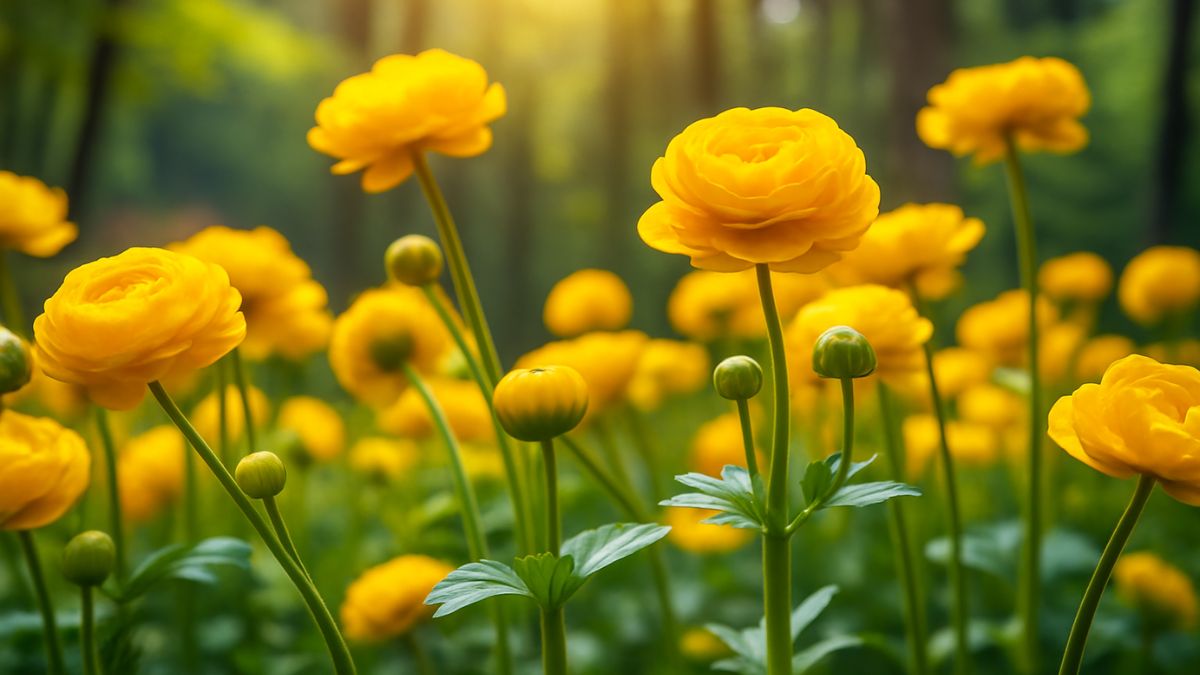If you’ve ever admired wedding bouquets or spring gardens filled with vibrant, layered flowers, chances are you’ve seen Ranunculus. Known as the “rose of spring,” these blooms offer spectacular colors and a long vase life. Many gardeners assume they are difficult to grow, but with the right guidance, Ranunculus bulbs can thrive beautifully in your own backyard.
In this article, I’ll share step-by-step tips for growing Ranunculus bulbs, drawing from both expert gardening practices and my personal experience.
Understanding Ranunculus Bulbs

Ranunculus plants grow from corms, which resemble small claws. These corms produce tall stems topped with layered, rose-like flowers in shades of red, pink, yellow, orange, and white. Unlike roses, however, Ranunculus are seasonal bloomers that flourish in cooler spring conditions.
They require attention to soil temperature, sunlight, and water to perform at their best.
Choosing the Right Location
1. Sunlight Needs
Always choose a location that gets full sun for at least 5-6 hours a day. Without this, the plants may stretch too tall and fail to bloom as vibrantly.
2. Avoid Humidity
It’s essential to avoid areas that have high humidity. Excess moisture can cause the corms to rot and encourage fungal diseases. If you live in a humid region, grow them in raised beds or containers where airflow is better.
3. Preparing the Soil
The foundation of healthy Ranunculus is soil.
- Ranunculus flower bulbs require soil that is well-draining and rich in organic matter.
- A mix of sandy loam with compost is ideal.
- Adding organic compost improves soil structure and provides nutrients for longer-lasting blooms.
💡 From my experience, planting in raised beds makes it easier to control drainage, especially in rainy climates.
Also Read: Grow Bougainvillea Like a Pro: Bold Color, Fewer Problems!
Planting Ranunculus Bulbs
- Soil Temperature: Ranunculus thrive when planted in soil temperatures of about 50°F. If planted too early in colder soil, they may rot; if planted too late, heat may prevent growth.
- Nighttime Conditions: Ensure night time temperatures are between 45 and 50 degrees (Fahrenheit). This range mimics their natural environment and allows strong root development.
- Spacing and Depth: When planting, dig a hole to fit the corm comfortably, roughly 5cm deep and 10cm apart. Point the “claws” of the corms downward to encourage proper growth.
Watering Needs
One of the most common mistakes is improper watering.
- Always keep Ranunculus moist without overwatering.
- Water enough to keep soil consistently damp but not soggy.
- Overwatering can rot the corms, while underwatering can cause small, weak blooms.
Tip: Mulch lightly around the plants to maintain soil moisture and regulate temperature.

Quick Care Guide for Ranunculus
Care Factor |
Requirement |
Sunlight |
Full sun for 5-6 hours daily |
Soil |
Well-draining, rich in organic matter |
Temperature |
50°F soil temp; 45-50°F at night |
Humidity |
Avoid areas that have high humidity |
Planting Depth |
5 cm deep, 10 cm apart |
Watering |
Moist but not soggy |
Seasonal Care and Maintenance
- During Growth: As shoots appear, fertilize with a balanced liquid fertilizer every 2–3 weeks. This boosts flower production.
- During Blooming: Deadhead spent flowers to encourage more blooms. Cut flowers early in the morning for best vase life.
- After Blooming: Once flowering is over, allow the foliage to die back naturally. This feeds the corm for the next season. You can then dig up the corms, dry them, and store them in a cool, dry place until the following fall.
Also Read: How You Can Add Syngonium to Your Home
Common Challenges and Solutions
- Corm Rot – Usually caused by planting in poorly draining soil. Fix: amend soil with sand or perlite.
- Fungal Diseases – Common in humid areas. Fix: space plants well and water at soil level.
- Weak Blooms – Caused by insufficient sun. Fix: ensure at least 5-6 hours of sunlight daily.
Personal Experience with Ranunculus
The first time I grew Ranunculus in my garden in early spring, I underestimated how much sun they needed. Initially, I placed them in partial shade, and while they sprouted, the blooms were few and pale. The following year, I shifted them to a sunnier bed and followed the spacing guideline to dig a hole to fit the corm comfortably, roughly 5cm deep and 10cm apart.
The result? Dozens of vibrant, rose-like flowers that lasted for weeks in vases. The difference showed me why proper planting conditions are crucial for success.
Global Popularity
Ranunculus flowers are not only loved in India but also in Canada, the USA, and across Europe. Their popularity in floral arrangements makes them a favorite among professional florists and home gardeners alike. By growing them yourself, you can enjoy luxury-quality flowers at home without paying a florist’s price.






